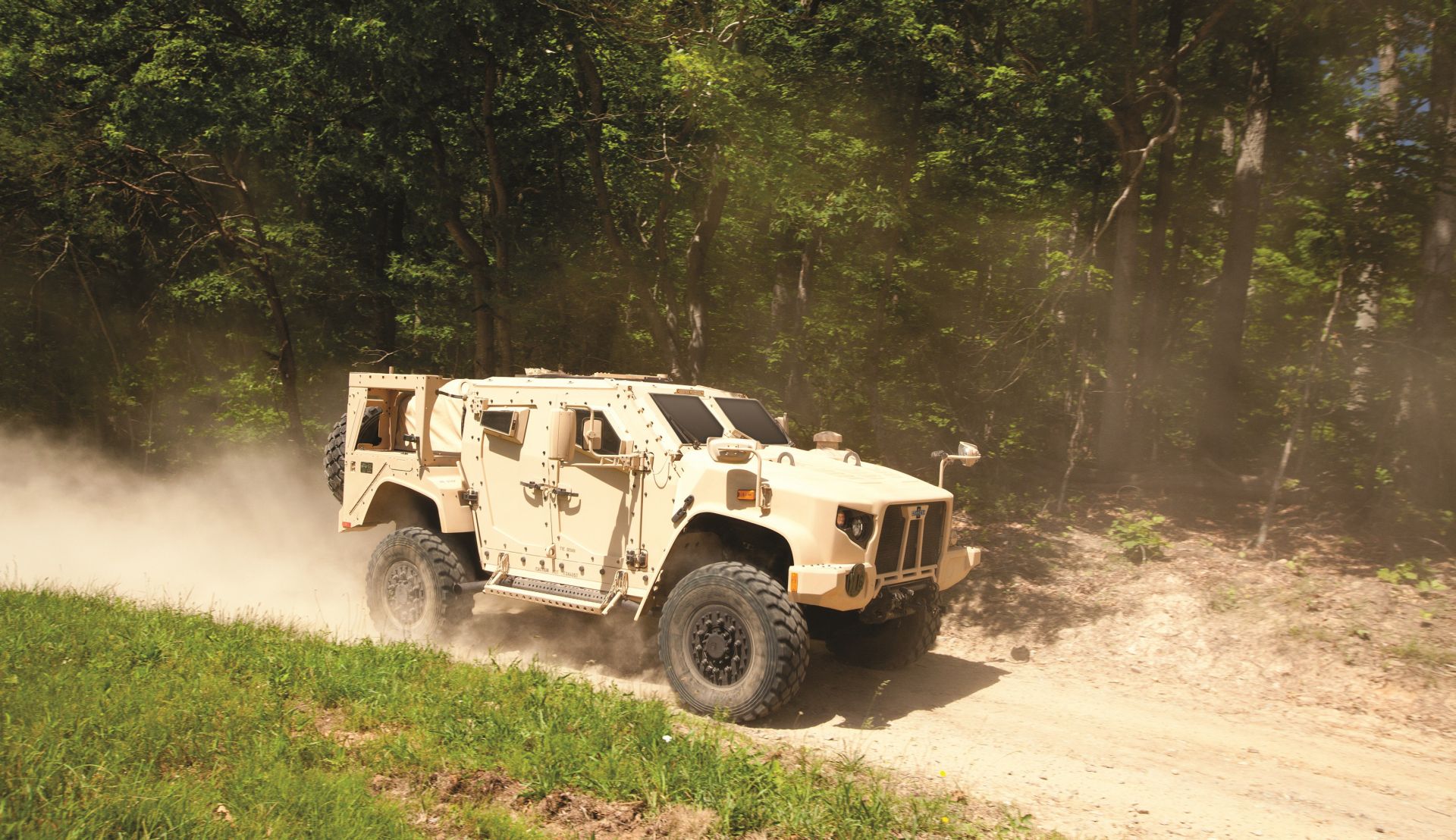The first seven joint light tactical vehicles were turned over to the Army and Marine Corps in late September by Oshkosh Defense for testing at different sites around the force.
A total of about 100 of the JLTV “production vehicles” will be provided to the Army and Marine Corps for testing over the next year, at a rate of about 10 per month, officials said. The vehicles will undergo maneuverability and automotive testing at Yuma Proving Ground, Arizona, and other sites around the country.
The JLTV is a tactical wheeled vehicle with a chassis that offers protection from underbelly blasts and an “intelligent” suspension system that can be raised and lowered for off-road conditions. It also touts greater fuel efficiency than current tactical vehicles.
In addition to testing at Yuma, the vehicles will undergo testing for cyber integration of command, control, communications and intelligence at the Electronics Proving Ground on Fort Huachuca, Arizona. The vehicles will also be tested for automotive performance at Aberdeen Proving Ground, Maryland and the Cold Regions Test Center on Fort Greely, Alaska.
“It’s on schedule,” said Scott Davis, program executive officer for combat support and combat service support, about the JLTV program. “It’s doing everything we ever expected it to. It’s just incredible.”
The JLTV has four different variants: a general-purpose truck, a close-combat weapons carrier, a heavy guns carrier, and a two-door utility pickup version. The group of trucks delivered last week included all but one of the variant types, the close-combat weapons carrier. That variant should be included in the next delivery in a few weeks, according to an Oshkosh spokesman.
Col. Shane Fullmer, project manager for the JLTV program, said the decision on the caliber of the weapons to be fielded on the variants will be made over the next few months.
Once full production begins on the JLTV program in 2019, Army acquisition officials expect to shave five years off the original fielding schedule. The schedule reduction is expected to save $6 billion from previous estimates, Davis said.
“Based on our original budget-planning figures for the vehicle, if it now comes in at a lower price, we’ll be able to buy more each year, which shrinks the total length of the contract,” Davis said. “Of course, as you shorten things up, you accrue cost avoidances.”
Originally, plans for the program called for fielding all 54,599 vehicles for the Army and Marine Corps by the early 2040s. However, as a result of the unit cost savings, the Army should be able to buy more trucks faster. The Army may acquire the full complement by as early as the mid-2030s, officials said.
Katrina McFarland, assistant secretary of the Army for Acquisition, Logistics and Technology, called the JLTV is “a marvelous construct” designed by brilliant engineers.
The JLTV program has already been recognized as a model in acquisition, winning the Department of Defense’s prestigious David Packard Award for Acquisition Excellence twice — in 2013 and 2015.
Just this past week, at the Association of the U.S. Army’s Annual Meeting and Exhibition, Army leaders honored the program with the 2015 Secretary of the Army’s Award for Environmental Excellence in Weapon System Acquisition.










